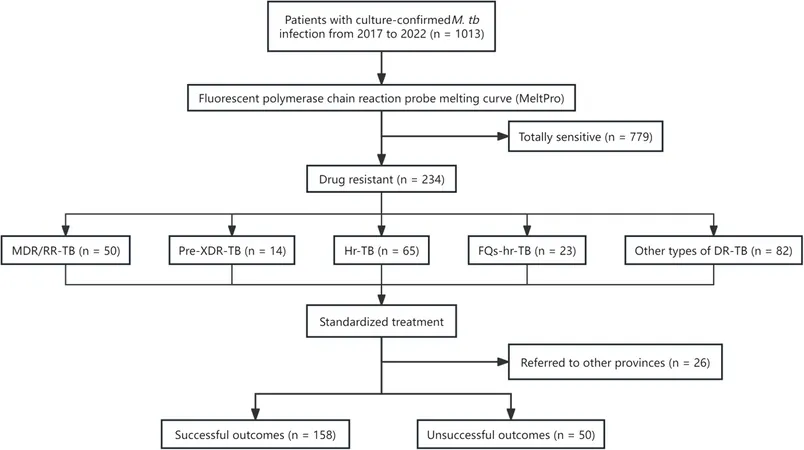
Unmasking the Hidden Dangers: Key Risk Factors for Poor Outcomes in Drug-Resistant Tuberculosis Patients Revealed
2025-03-27
Author: Rajesh
The Study at a Glance
Between 2017 and 2021, a total of 1,013 tuberculosis patients receiving care at three designated TB hospitals in Zhejiang underwent a rigorous evaluation. Using advanced techniques like fluorescent polymerase chain reaction (MeltPro), researchers conducted drug susceptibility testing to ascertain the resistance profiles of the patients. Following standardized treatment as recommended by WHO, the patients' outcomes were tracked up until June 2023.
Revealing the Risk Factors
Through meticulous multivariate analyses, the study also identified several independent risk factors that significantly correlate with poor treatment outcomes:
1. Age Matters: With each year a patient ages, the odds of unfavorable outcomes increase (AOR 1.03). Those over 60 are at a notably higher risk.
2. Previous Treatment History: A staggering five-fold increase (AOR 5.03) in risk was associated with a history of prior TB treatment, pointing to the complexities and challenges faced by relapsed patients.
3. Severity of Disease: The severity score of TB, based on WHO definitions, indicates that more severe cases (AOR 1.48) are less likely to see favorable results.
4. MDR/RR-TB and Pre-XDR-TB: Patients with multidrug-resistant (MDR) and pre-extensively drug-resistant (pre-XDR) TB showed the highest risk (AOR 8.34 and 9.50 respectively), highlighting the urgent need for targeted interventions in these populations.
A Broader Perspective
This research not only underscores the importance of age and prior treatment in determining outcomes but also calls attention to broader considerations like the socioeconomic factors that plague patients. Many of those affected tend to be from lower-income backgrounds, where inadequate access to healthcare and treatment challenges amplify the effects of disease.
Furthermore, the findings align with global trends indicating higher risks among older adults and previously treated patients. This isn't just a local concern; it's a pressing international public health challenge that warrants immediate action.
Conclusion: A Call for Action
As the fight against DR-TB rages on, clinicians must remain vigilant, particularly for older patients or those with a history of inadequate treatment. This study reinforces the necessity for ongoing global research and the implementation of robust health policies aimed at improving treatment strategies for DR-TB patients.
With a treatment success rate that matches global standards, there is hope. But the battle is far from over. Understanding and addressing the risk factors identified could be a game-changer in the fight against drug-resistant tuberculosis—an urgent call to action for health authorities worldwide!

 Brasil (PT)
Brasil (PT)
 Canada (EN)
Canada (EN)
 Chile (ES)
Chile (ES)
 Česko (CS)
Česko (CS)
 대한민국 (KO)
대한민국 (KO)
 España (ES)
España (ES)
 France (FR)
France (FR)
 Hong Kong (EN)
Hong Kong (EN)
 Italia (IT)
Italia (IT)
 日本 (JA)
日本 (JA)
 Magyarország (HU)
Magyarország (HU)
 Norge (NO)
Norge (NO)
 Polska (PL)
Polska (PL)
 Schweiz (DE)
Schweiz (DE)
 Singapore (EN)
Singapore (EN)
 Sverige (SV)
Sverige (SV)
 Suomi (FI)
Suomi (FI)
 Türkiye (TR)
Türkiye (TR)
 الإمارات العربية المتحدة (AR)
الإمارات العربية المتحدة (AR)